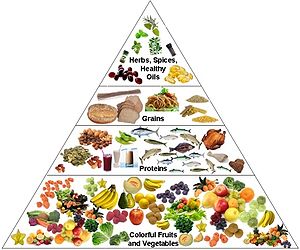Pregnancy Diet Plan - Second Trimester
The second trimester of pregnancy is known as the most enjoyable and relaxed period. It is often called pregnancy’s ‘honeymoon phase’! The worst is over, there is no more nausea, and you are starting to get used to being pregnantThis trimester is full of physical changes for your entire body. You will notice your breasts getting larger and your belly growing as the baby makes room in your uterus. You will notice stretch marks around your breasts and belly. It is common to have occasional leg cramps and dizziness. This is just your body adjusting to the pregnancy.
Along, with this body changes the craving for food also grows. This is because the baby is growing inside of you and needs nutrition. During this trimester, you should normally gain 3 to 4 pounds every month. Gaining weight is a sign of a normal pregnancy, so don’t be afraid of it.
During the last month of this trimester, you will even start to feel your baby move. You may notwithstanding of experience an occasional kick or jab. Fetal movements are signed of a healthy baby and are necessary for the baby’s growth during this stage.
List of Foods
The second trimester is the easiest for the mother. Nausea and morning sickness have passed, and you will feel a lot more relaxed and energized. Gaining weight is an important part of this trimester.
During this trimester Calcium and Vitamin D are very important for the mother’s body. These will help your baby to grow strong bones. Examples of Calcium-rich foods are milk, almonds, yogurt, rice and cheese. Examples of Vitamin D rich foods are fished, egg yolk, soy and orange juice.
Omega-3 fatty acids acids also need to be an important part of your diet. They help in the development of the baby’s brain. Fishes like salmon and mackerel are an excellent source of Omega-3 fatty acids. acids.
Iron-rich foods are important throughout the entire pregnancy. Iron will help your body produce red blood cells, which are significant for the growing baby. Dried fruits, porridge, chicken, lamb, spinach and green vegetables are a good source of iron.
To avoid gaining more weight than is required, you should follow a good diet plan. This will help you gain the right amount of weight required during the growth of the baby. Gaining too much weight is not a healthy sign either.
Meal Plans
A meal plan is the best way to keep your pregnancy diet right on track and receive all the nutrition required for the baby in this trimester. Here are three meal plans, perfect for each month of the second trimester:
For complete coverage about Pregnancy Diet Plan - Get your E-book with just US$5 bucks!













